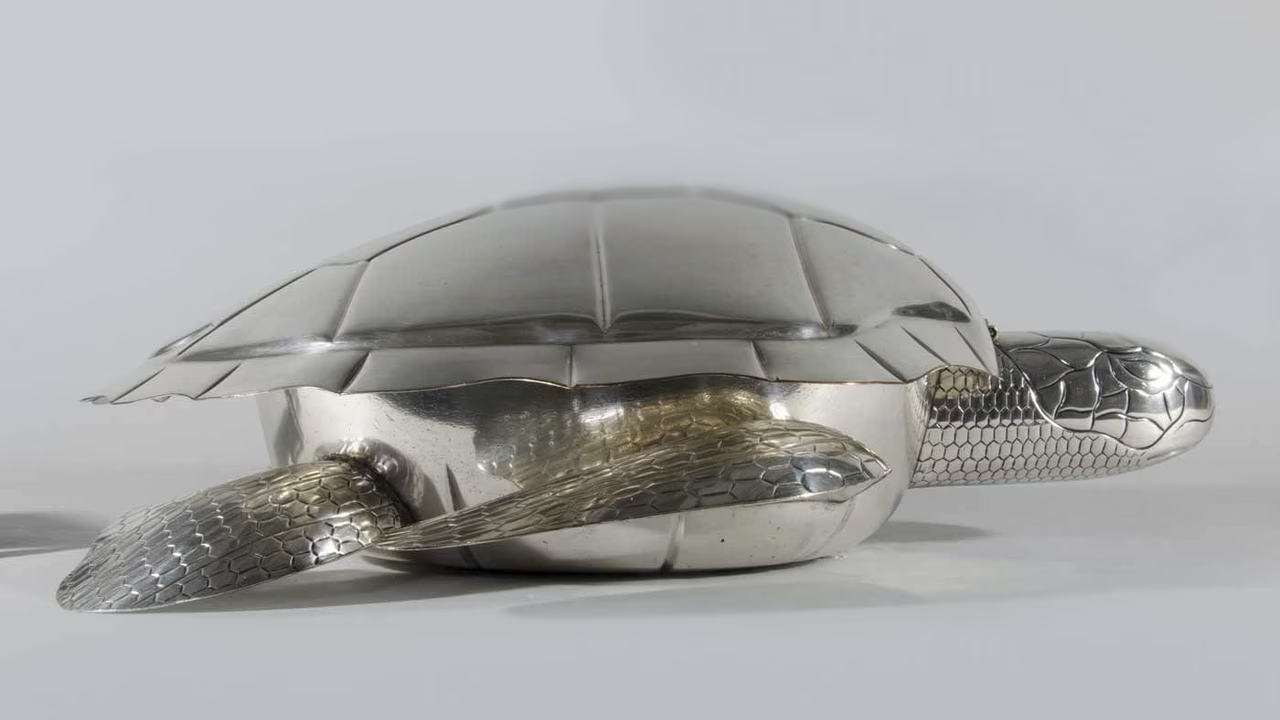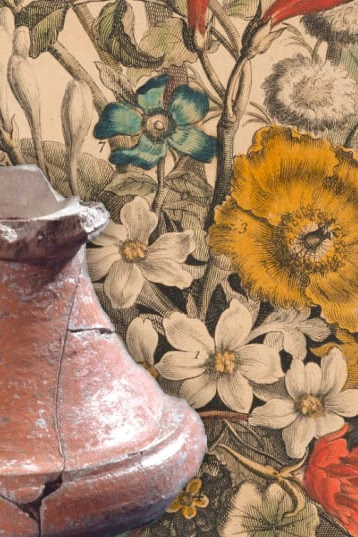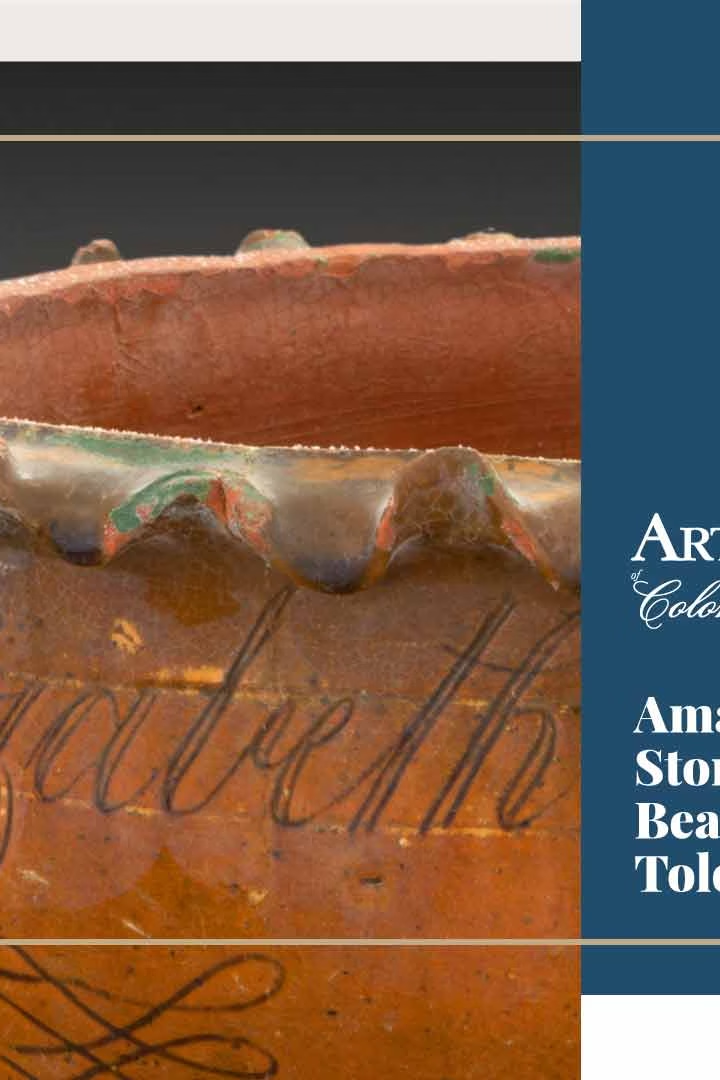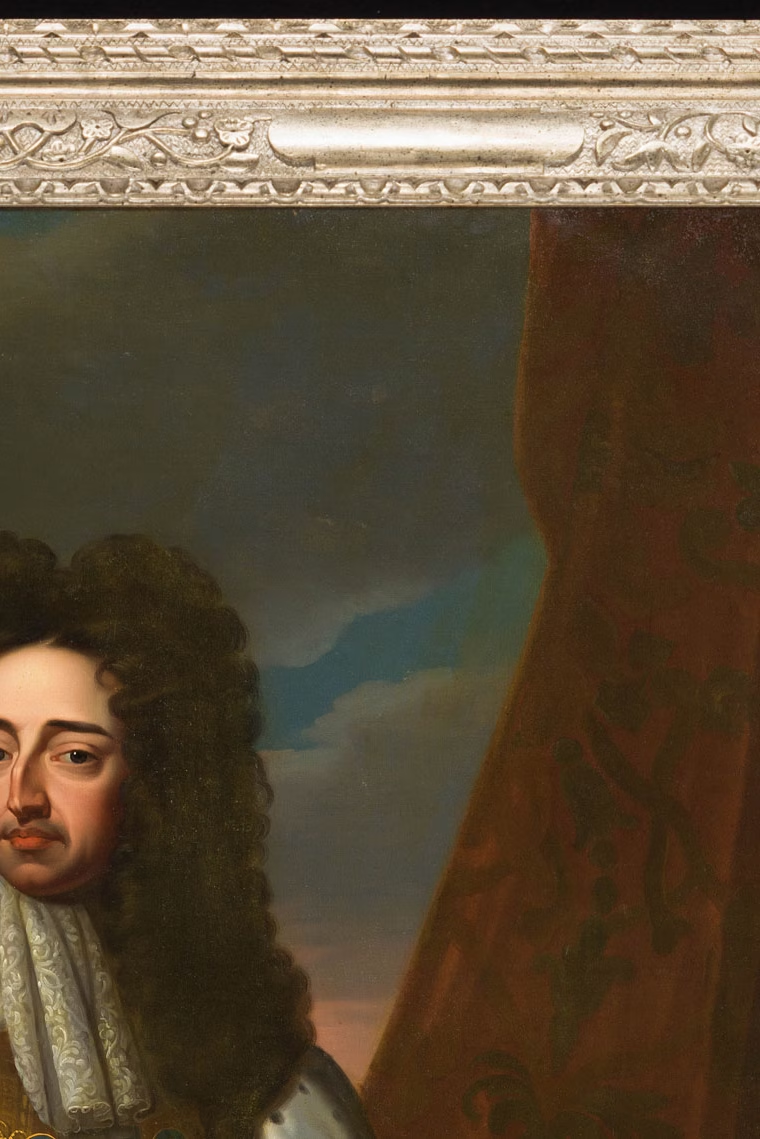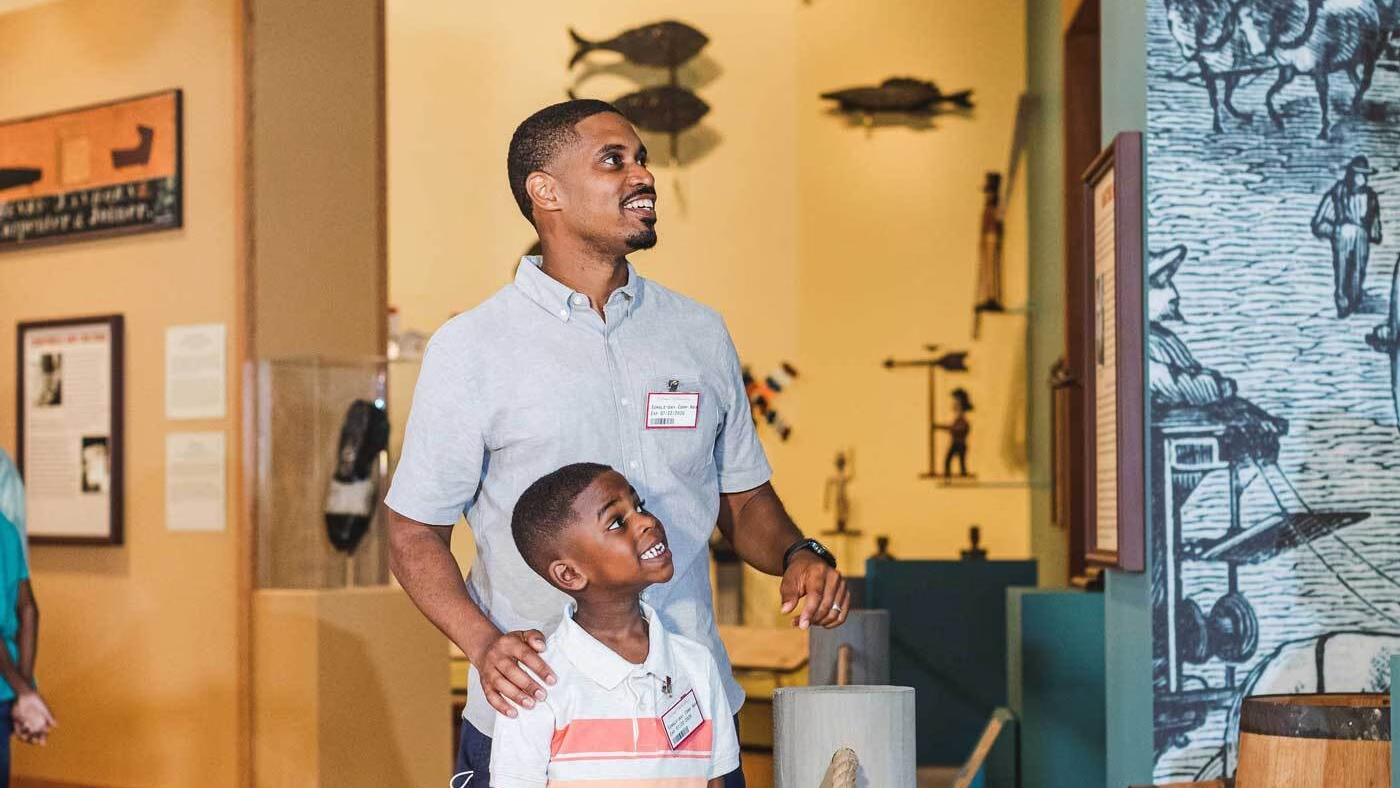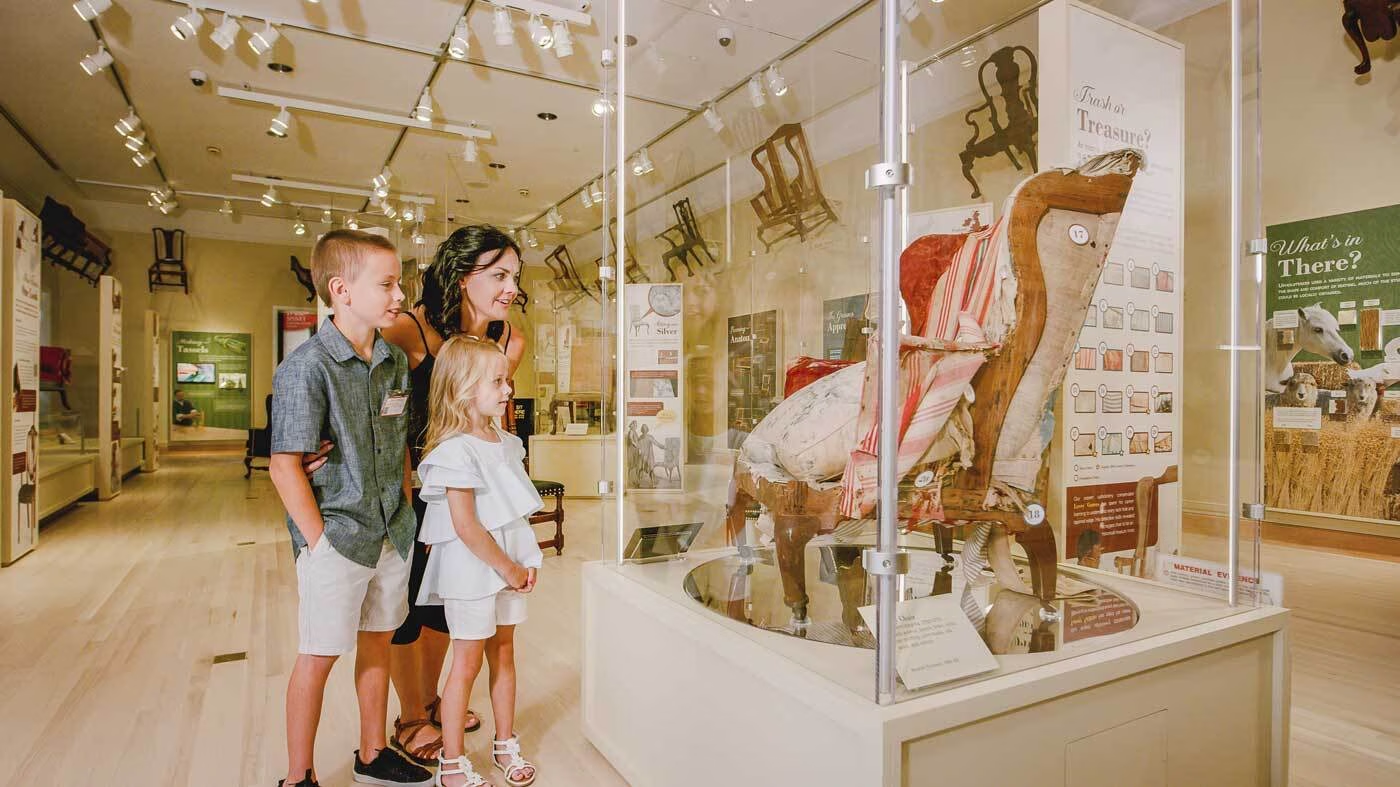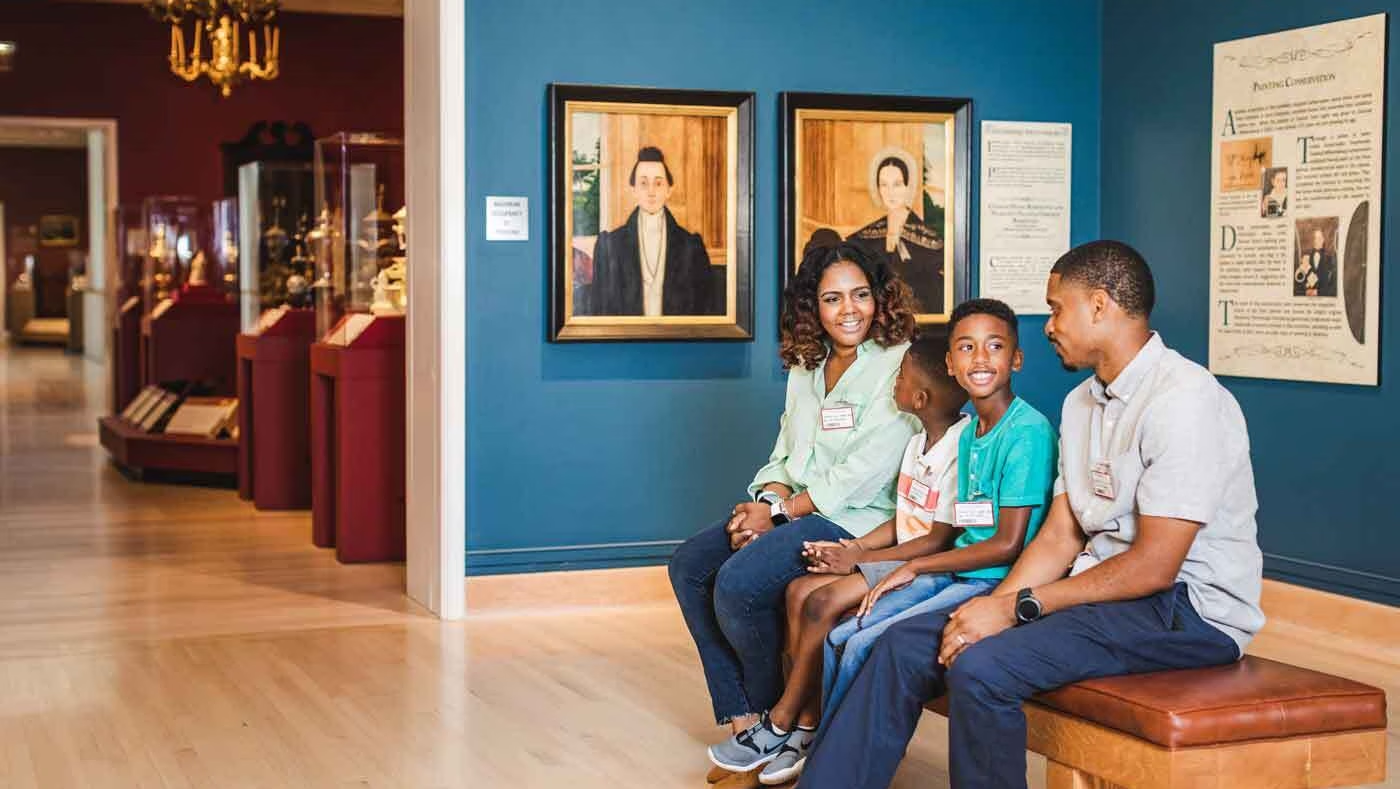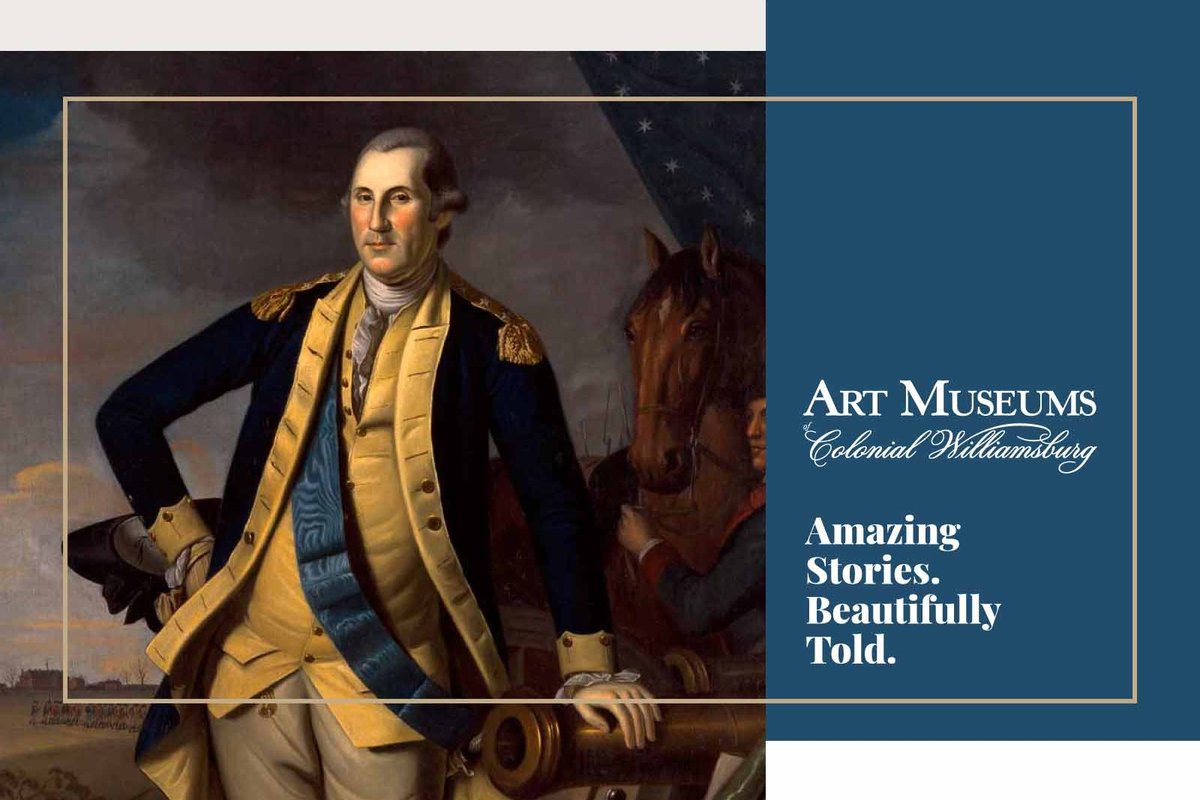
Historical Portrait of George Washington
Every object has a story. The Art Museums of Colonial Williamsburg tell the stories of a breathtaking range of folk and decorative art. Let's explore this historical portrait of George Washington in the "Early American Faces" exhibition. Like this kind of stuff? We've got tons of it.
What is it?
From the moment you step inside the Art Museums, you catch a glimpse of the Foundation’s iconic portrait of George Washington.
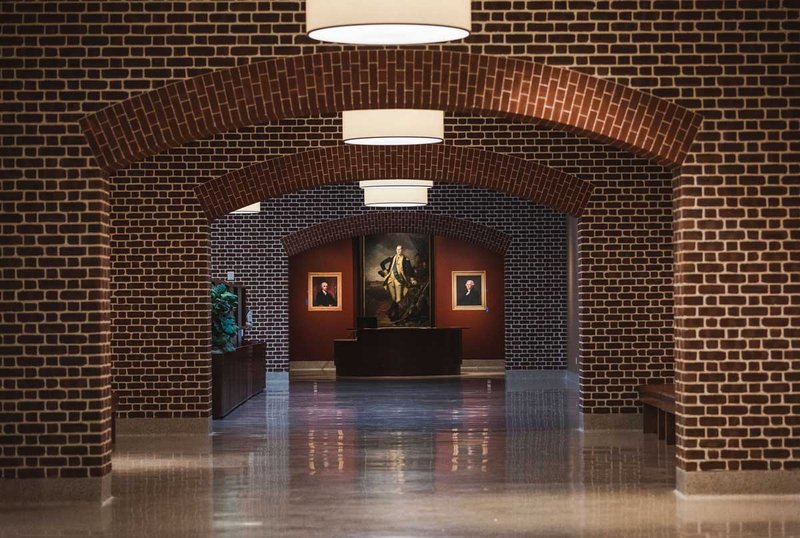
At nearly nine feet tall, the commanding likeness of our nation’s first president, then Commander-in-Chief of the Continental Army, welcomes you from the end of the building’s grand concourse. The life-size portrayal was rendered in 1780 by the country’s preeminent portraitist, Charles Willson Peale, and represents one of the most important paintings of the American Revolutionary period.
What’s the story?
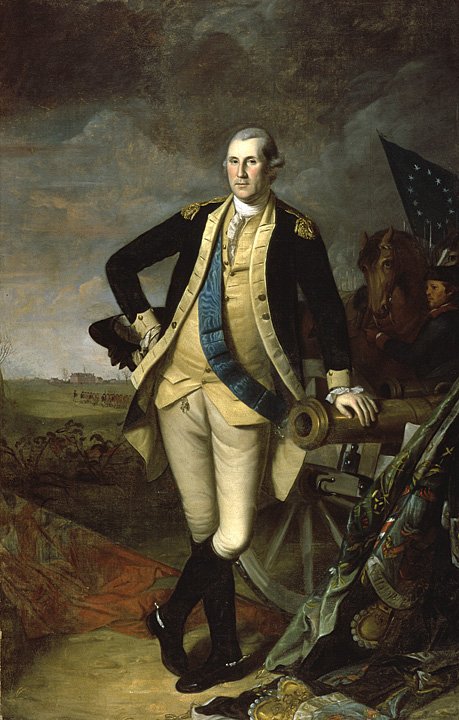
First portrait commissioned by the Supreme Executive Council. George Washington at Princeton by Charles Willson Peale, Philadelphia, Penn., 1779, oil on canvas, 93 x 58 ½ in., gift of Maria McKean Allen and Phebe Warren Downes through the bequest of their mother, Elizabeth Wharton McKean, Pennsylvania Academy of the Fine Arts.
“Deeply sensible how much the liberty, safety and happiness of America. . . [was owed] to His Excellency General Washington,” the governing body of Pennsylvania commissioned a portrait of George Washington to display in its Council Chamber (see above). In 1779, the Supreme Executive Council hired the well-known painter Charles Willson Peale to create a public likeness that would honor the commander’s leadership and service in the Philadelphia campaigns.

In late January, Washington posed for the artist in Philadelphia, who later travelled to the battleground sites of Trenton and Princeton so that he could prepare preliminary sketches for details and the background of the painting. In addition to specific references to the recent victories such as fallen British flags, captured Hessian soldiers, and the buildings at Princeton, the artist incorporated into the painting generic symbols of war that reinforced Washington as a triumphant leader.
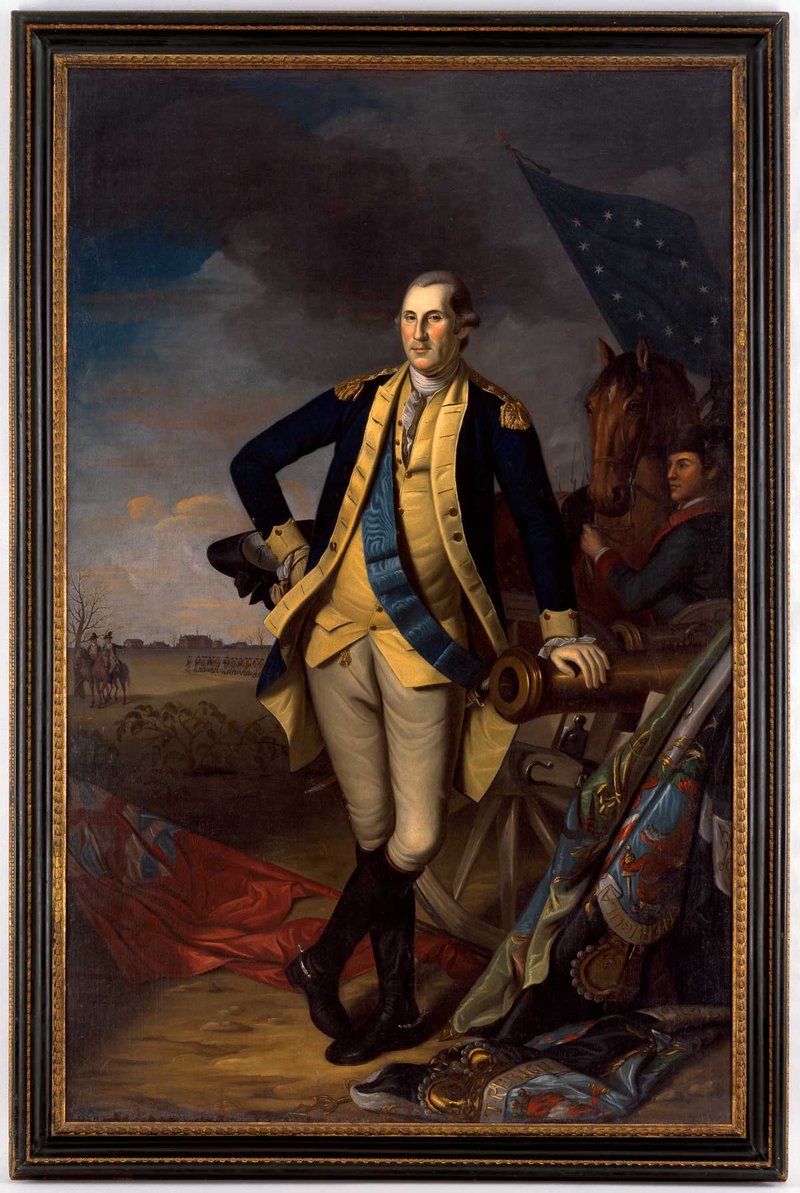
Colonial Williamsburg’s Portrait of George Washington by Charles Willson Peale, Philadelphia, Penn., 1780, oil on linen ticking, 106 × 71 1/4 × 3 1/2in., Gift of John D. Rockefeller, Jr., 1933-502, A&B.
The likeness was an immediate success and before it was even complete, Peale received requests for replica copies of the painting from Washington’s friends and associates, like Charles Carter of Shirley Plantation in Virginia, who likely commissioned Colonial Williamsburg’s portrait (see above). In addition to private individuals, orders were also made for and given to foreign heads of state who were colonial allies in the war.
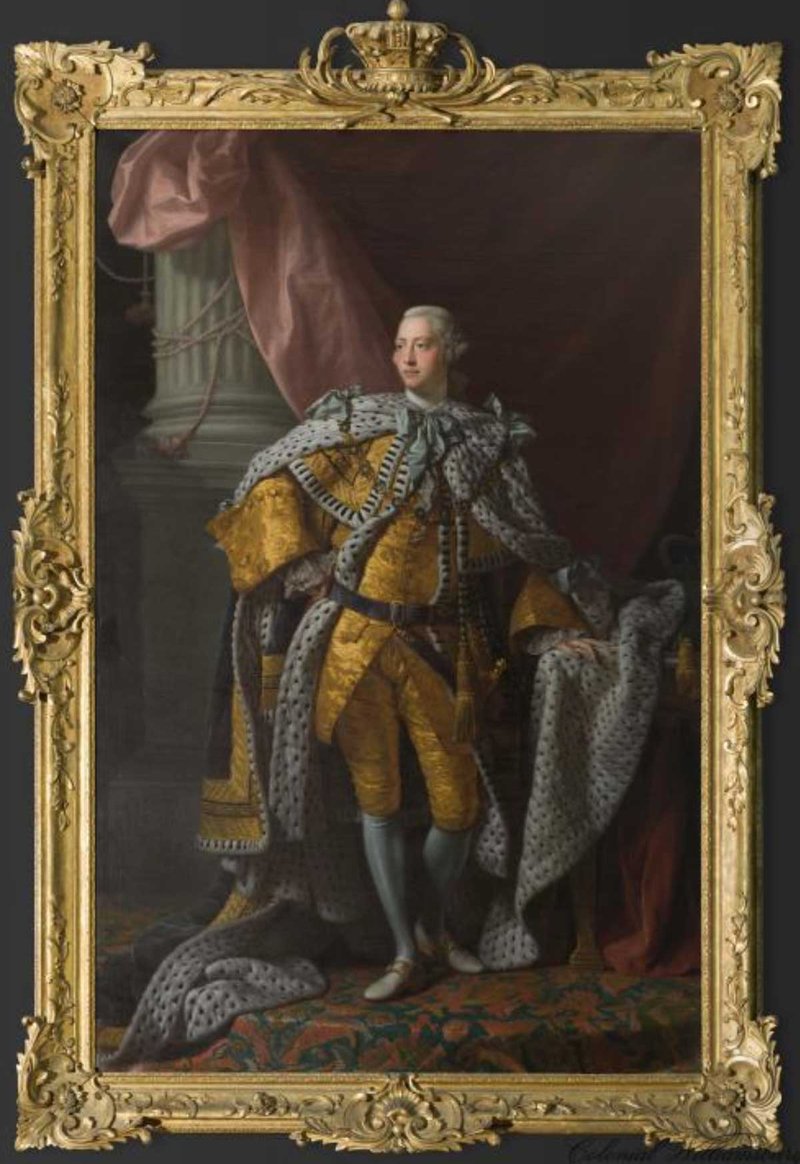
Portrait of King George III attributed to the studio of Allan Ramsay, London, England, ca. 1770, oil on canvas, 112 3/4 x 76 1/2in., Museum Purchase, 1936-375, A&B.
Peale’s use of the state portrait format, typically reserved for likenesses of British and European royalty, was a powerful artistic tool and universally understood. In particular, the similarity of Washington’s likeness to that of England’s reigning monarch, King George III, would have been immediately recognized and the political message made clear: Washington as leader of the colonial forces is ready, willing, and able to take on the British empire. Although it would take another three years before the surrender at Yorktown, Peale’s portrait was a bold statement that underscored the military hero’s determination and resolve in leading the colonies to impending victory.
Why it Matters
Many scholars consider the Peale portraits of Washington at Princeton to be the first official state portraits because, in part, they were commissioned as public art. Colonial Williamsburg’s canvas was privately owned by the Carter family and resided at the family’s residence on the James River near Richmond, since the early nineteenth century. In addition to its history and role as a local document from the Revolutionary period, the painting is also important as one of the first objects acquired for the Foundation.
See for Yourself
You can find this portrait of George Washington and tens of thousands of objects in our Online Collections. We also invite you to see this remarkable painting in person at the Art Museums of Colonial Williamsburg and discover more amazing stories, beautifully told.
Art Museums of Colonial Williamsburg
Explore museum experiences, collections, exhibitions, virtual experiences, conservation, and more.
